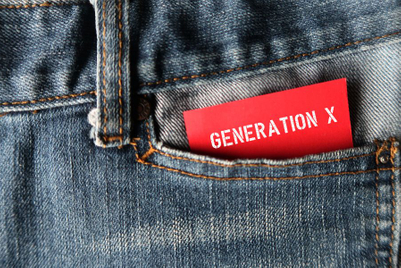Generational and tier-based differences among Chinese consumers are "evaporating", and a reliance on these outdated ideas has become an impediment to brand growth, according to Stephen Drummond, chairman and chief strategy officer of Y&R China.
Intrinsic personality traits matter more when it comes to segmenting consumers, according to the company, which is launching 'Psyche', a new quant-based segmentation tool.
In an interview ahead of the launch, Drummond busted five marketing myths:
1. Anyone over 50 years old in China is not worth marketing to as they are too conservative and aren’t into new brands or new experiences.
In fact, the single largest group of 'early adopters' in China are over 50. They not only have the mindsets to try new brands and experiences, they are in many cases cashed up with stocks and property.
2. People in the 18 to 25 age group are the most lucrative because they are energetic and outward-looking people who enjoy seeking new frontiers and experimenting with life, and also typically the first to try new brands.
The tougher employment market and higher living costs have created a more conservative younger generation in China. Many youngsters seek more security and basic protection.
3. China is divided into specific city tiers and they reflect the level of market sophistication.
While big differences remain in rural markets, urban areas are more mobile and connected. This means that this old city-tier targeting model is irrelevant. Also, expansion of e-commerce into towns and even villages means it’s increasingly irrelevant for shopper segmentation.
4. Buyers of premium packaged goods are determined by their income levels.
Rising income levels are evidenced by the substantial shift to affluence. China is still a developing market for a lot of categories, but if marketers keep chasing the same people that are already buying their products, growth will be limited.
5. Shanghai is the most ‘savvy’ city. Beijing is the most staid.
There’s a wide spread of adventurous 'early adopters' all around China these days. In fact, Beijing has the largest percentage of them—substantially higher than Shanghai.
While psychographic studies are nothing new, the data Y&R is using are fresh and China-specific, Drummond said.
He explained that 20 years ago, there were "yawning generational chasms in China" linked to the difference between those who grew up in much more austere times pre-1980s, versus individuals who matured during the 1990s long after the cultural revolution.
Therefore, brands have historically emphasised marketing toward ‘young adults’ as the generation that embraces openness and responds more favourably to new brands and new categories.
The same emphasis is put on first-tier cites in China, as there’s still an assumption that people in the lower tiers are relatively backward.
"There may have been some truth to that in the past, but these generational and tier differences are evaporating," said Drummond. This way of thinking does not make sense as China now moves into its 35th year of opening up. "It is no longer relevant and is in fact an impediment to growth."
Today Chinese people are far less siloed by age, cohort or region, he stated. "The differences between people lie more in their intrinsic personality traits rather than what year or where they were born," he said. "The obsession that everything must be targeted young is a myth that we want to break. Also, everyone is still clinging on to the McKinsey model of city tiers. Another demographic obsession now proven to be a blow-out."


To gather psychographic data for the Psyche tool, Y&R China conducted interviews with 4,000 urban Chinese adults across eight major cities. Every person was asked 50 questions about attitudes and values in order to uncover motivations.
Seven psychographic types emerged (please see the gallery above for details). Ideally, brands will be on-trend if they are appealing to one of these growing segments: explorers, aspirers, or mainstreamers.
Conversely, overestimating the declining segment of succeeders is problematic, Drummond advised.
Old habits may die hard, so Drummond (who is primarily a reformer and a secondary succeeder, he revealed) acknowledged that demographics can still be factored in as required. "Let common sense prevail," he said.





















.jpg&h=334&w=500&q=100&v=20250320&c=1)


.png&h=334&w=500&q=100&v=20250320&c=1)


.jpg&h=334&w=500&q=100&v=20250320&c=1)


.png&h=268&w=401&q=100&v=20250320&c=1)

.jpg&h=268&w=401&q=100&v=20250320&c=1)


